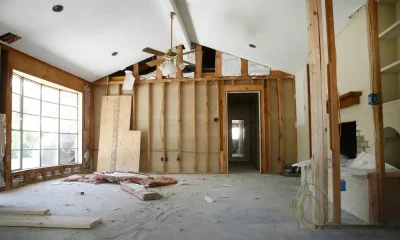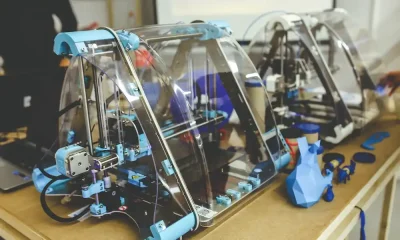Build
Why Engineers Are Essential In Construction

In the construction world, engineers’ silent yet profound role is often overshadowed by the allure of architectural designs and aesthetic appeals.
However, the meticulous calculations, innovative solutions, and engineers’ expertise transform architectural visions into tangible, safe, and sustainable structures.
In this article, we look at the role of engineers in the construction of buildings and homes.
Engineers: The Pillars of Construction
Engineers are the unsung heroes in the construction of every home. They blend art with science, theory with practice, and vision with reality to create structures that are as safe and sustainable as they are aesthetic.
Engineers turn architectural dreams into tangible, livable spaces. They ensure that the foundation of every home is rooted in principles of structural integrity, safety, and resilience.
To understand engineers’ vital role in construction, one must explore the different types of engineers involved in this intricate process.
Civil Engineers
Civil engineers are the generalists in the construction world, orchestrating a symphony of elements to construct a solid, safe, and efficient home.
Civil engineering includes undertaking a comprehensive site analysis, considering terrain evaluation, soil nuances, gradients, and potential challenges. This crucial step ensures that the construction plan is tailored to the specific characteristics of the land, promising long-term stability.
Another task of civil engineering is material selection. Engineers meticulously select materials that balance cost, quality, and sustainability. They rigorously test materials for strength, durability, and safety, ensuring that only the best are used in construction.
Quality assurance is a cornerstone of civil engineering.
Structural Engineers
Structural engineers are sentinels of safety and stability, intricately weaving scientific principles with innovative practices to ensure every built structure is a bastion of safety and resilience.
In design optimization, structural engineers are akin to master artisans. With a keen eye on load calculation, they meticulously assess anticipated loads and pressures, ensuring that structures comply with standards and excel in safety and durability.
Each assessment is a blend of precision and expertise, ensuring structures withstand the multifaceted pressures and stresses of the natural and urban environment.
Blueprint analysis is another forte; they refine and enhance architectural blueprints, ensuring that aesthetic allure seamlessly merges with structural integrity. Every line drawn and plan made is a balanced composition of art and engineering.
Structural engineers are meticulous inspectors, ensuring that every process, material, and construction element aligns with the epitome of safety protocols.
Structural engineers navigate the intricate landscape of regulatory standards and codes to ensure compliance. They ensure that every constructed space is not just a dwelling but a sanctuary that adheres to and often exceeds the established norms of safety and quality, crafting homes where safety, elegance, and innovation coexist.
Integrating Technology in Construction
In the digital age, engineering is intertwined with technology. The construction of modern homes isn’t just about bricks and mortar; it’s a narrative of integrating technological innovations to enhance efficiency, safety, and liveability.
From design to construction, software applications are pivotal, offering precision, efficiency, and adaptability. Some of the types of technologies include
virtual modelling and use of smart tech.
Software applications enable engineers to create virtual models, predicting and addressing potential challenges before construction begins. These applications also foster real-time coordination among various construction professionals.
Additionally, engineers use smart technologies, such as IoT (Internet of Things), to turn homes into dynamic, responsive spaces. Smart tech is used for solar panels, energy-efficient appliances, and automated systems to optimize energy use and make homes eco-friendly and sustainable.
The Legacy of Engineering in Home Construction
The stories of homes are incomplete without acknowledging the silent narratives penned by engineers. Every wall, window, and doorway echoes the meticulous calculations, innovations, and expertise of engineers who translate architectural visions into liveable realities. Engineers focus on the following requirements.
Safety and Resilience
Engineers are the custodians of safety, ensuring homes are sanctuaries that withstand the tests of time and nature. They design homes to be resilient against natural disasters, echoing the safety ethos amidst beauty.
Maintenance and Renovation
Engineers inspect homes to ensure structural integrity is maintained over time. They also oversee renovations and upgrades, ensuring homes evolve while retaining their foundational strength.
Aesthetic and Functionality
Beyond safety and stability, engineers ensure that aesthetics and functionality converge in every home. They innovate to ensure homes are safe and the epitome of aesthetic elegance.
Wrapping Up
It could be said that the journey of constructing a home is a dance between art and science, vision and reality, dreams and bricks.
Engineers emerge as silent choreographers in this intricate dance, weaving safety, beauty, innovation, and comfort into every space.
Engineers bring essential skills and knowledge to the construction process, ensuring that homes and buildings are structurally sound, safe, cost-effective, and compliant with regulations.
Their involvement is crucial for creating homes and buildings that will last and provide occupants with a secure and comfortable living and working environment.






